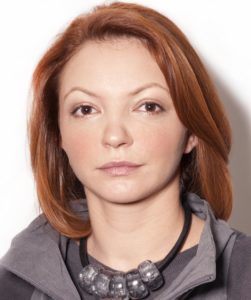Irina Guseva
Having the benefit of exposure to many different digital asset management systems, Guseva understands that success is more often measured by the value a company places on the staffing and change management with a new DAM system, as opposed to the software selected.
What companies/organizations have you worked for as a DAM professional? What was your role at each?
My career in DAM started when it wasn’t called Digital Asset Management yet, and when I published my first article in a local newspaper at the age of 12. I brought a paper-based asset to go along with that article – a photograph I took on my great uncle’s Zenit, and then processed and printed (all by hand) with him in a bathroom “studio,” deep down in the middle of (really) nowhere, in a small Siberian town.
Later, I worked as a journalist in print, radio and TV, and eventually online, getting exposure and experience with various content management technologies like MAM, DAM, ECM, WCM, etc, in various roles and capacities.
I’ve also implemented or managed implementations of DAM systems, researched and analyzed the DAM marketplace and vendors/software. As an independent DAM consultant, I help my clients make educated decisions in either selecting a DAM system that’s appropriate for their needs, or devising a DAM strategy according to industry best practices.
What’s the most important thing for someone new to DAM to understand about DAM?
DAM is one of the more exciting pieces of software out there. But it can also be very complex. To anyone starting out in DAM, I would advise to understand the marketplace, the vendors and the software they offer. You will see that an apple can indeed fall far from the tree, and not all DAM systems are created equal.
What is your ongoing greatest challenge with DAM?
In many projects I’ve consulted on, one of the biggest challenges is Digital Asset Management staffing. Too often, organizations tend to overlook the human resources aspect of the DAM system and do not properly plan for who will implement the change in the organization and what types of professionals will be needed on the team to make the DAM project successful.
Digital asset managers, librarians, developers, system administrators – these are some of the examples of the roles critical to DAM success from a staffing perspective. When creating a budget for the DAM project, keep in mind that your spending will not stop at the licensing of the DAM software: add to that the implementation (and who will take that on), training and education (who in your organization will be the DAM ambassador?), and ongoing support and enhancements (what is your DAM team?).
In other words, successful DAM is not only about software. You cannot take full advantage of your DAM system and innovate with it if you don’t have proper people in place.
What was your biggest mistake with regard to DAM?
It’s always tough to talk about mistakes, but we all make them every now and then, right? I would say that my biggest DAM mistake was related to not being able to help a client choose a DAM vendor that was more appropriate for the needs of the organization at the time. They didn’t end up in a DAM disaster, but it was not entirely ideal. DAM selection can be a very difficult process with many stakeholders involved across any given organization. There are certain procurement practices one must follow. Emotions often run high in light of the organizational change that a DAM brings. So it is understandable that some decisions that are made are not always ideal. And that’s OK, as long as you consider all the advantages and drawbacks of a certain decision and are willing to live with it, happily thereafter. Risk management and change management planning certainly helps.
This interview originally appeared on DAM Guru on Mon, 29 Sep 2014. For more DAM News interviews, see the interviews index page.
Share this Article:

